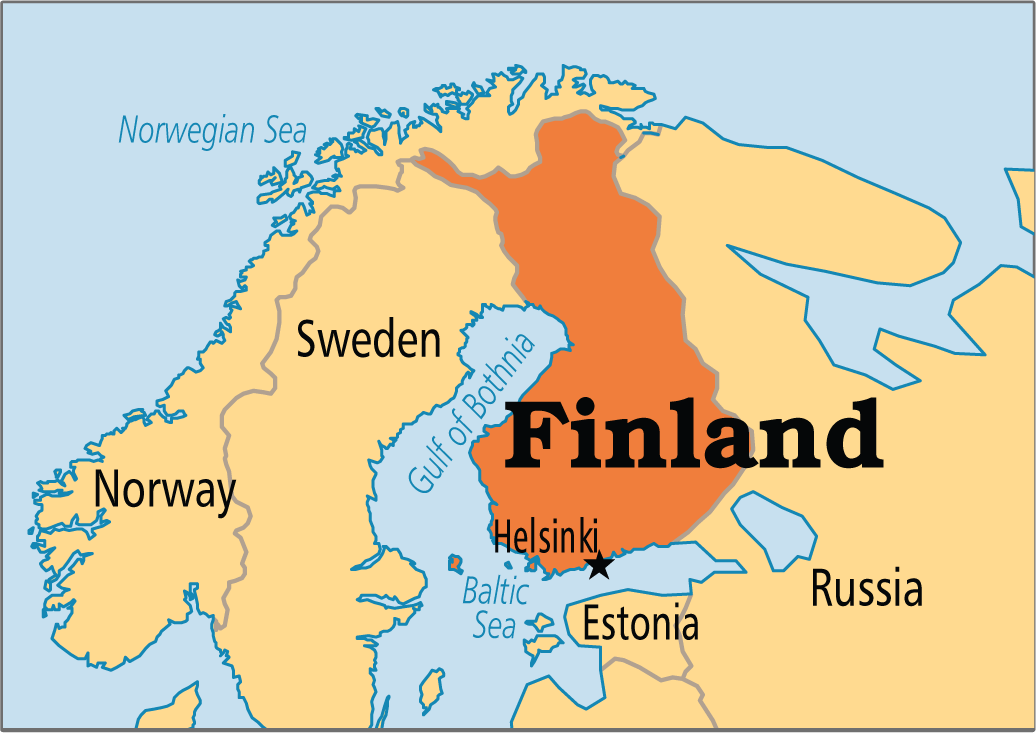
A Finnish Foundation offers several benefits to foreigners. The Finnish Foundations Act of 2015 (the “Act”) replaces the previous Act from 1930 with streamlined formation and termination rules. Under the 1930 Act, permission was required from the Finnish Patent and Registration Office (PRH) in order to form a foundation and to terminate one. The 2015 Act eliminated those permissions.
Background
Finland is a sovereign state situated in Northern Europe. Its official name is the “Republic of Finland”.
Its political system is described as a unitary parliamentary republic with a democratically elected legislature, president, and a prime minister.
From 1809 until 1917, Finland was an autonomous state of Russia. Finland has been a member of the European Union (EU) since 1995.
Benefits
A Finnish Foundation has the following benefits:
• 100% Foreign: The founder, beneficiaries, and assets can all be foreign and located outside of Finland.
• Fast Formation: Preparing the charter and registering with the government can be accomplished in one or two business days.
• Asset Protection: The assets are owned by the foundation protecting the founder and beneficiaries from seizure by their creditors.
• Estate Planning: Foundations are often created for a family’s heirs and their heirs for many generations.

Foundation Name
Finnish foundations must choose a name which is not exactly alike or too similar to another legal entity’s name in Finland.
The name must end using the word “Foundation” to avoid confusion with trusts, companies, corporations, and other legal entities.
Definition of a Foundation
The word “Foundation” is a general term in Finland. The term is similar to a “Private Foundation” or “Non-Profit Foundation” in the United States.
Foundations are established to manage donated properties for a beneficial purpose. Foundations are separate legal entities which can own properties in its own name and be able to file lawsuits and be named as a party to a lawsuit.
Foundations are established for a specific purpose such as obtaining funds for art, cultural, science, and wellbeing services. They can also be used for the well-being of a family and its heirs. Foundations do not have owners, members, or shareholders.
Managing Properties
A foundation can be created to manage properties donated for specific purposes. In the case of a family, the founder creates the foundation and donates properties to it by transferring the legal title to the foundation. The purpose may be for the benefit of the family and its heirs for many generations. Donated properties may generate income (like rental properties) for the foundation to be used for the purpose of benefiting named family members and their unnamed future heirs.
The foundation’s purpose is established in the foundation’s legal documents.
Foundation Charter
The Foundation’s Charter is the legal document establishing the foundation. Just like a corporation’s Articles of Incorporation (or Articles of Association) the charter provides how the foundation is to be administered and the assets managed. This includes describing how the trustees are appointed, compensated, removed, replaced, or their retirement. In addition, the powers and duties of the trustees are provided.
The charter also identifies the beneficiaries and what rights they possess, and how they benefit from the asset’s income and distribution.
The charter also describes the initial donation of assets and how they will be managed and disposed of. How future assets will be donated and managed. The types of investments which can be made along with what experts may need to be appointed to assist the Board with making investment decisions.
The hiring of officers and their powers and duties along with accountants auditors, financial experts, property managers, and other necessary appointments should be included.
Meetings of the Board and beneficiaries and officers how and when to be held and conducted including passing of resolutions and keeping minutes of meetings and other record keeping.
Finally, dissolution or termination by expiration either by events or time limits will explain how the assets will be distributed amongst the beneficiaries.
Other important details will also be included in the foundation charter.
By-laws may also be prepared similar to the by-laws of a corporation.
Registration
A foundation is registered with the government upon being included in the Register of Foundations.
Within 3 months from the date the foundation’s charter is signed, the foundation must be reported for inclusion in the Register of Foundations maintained by the Finnish Patent and Registration Office (PRH). This is accomplished with submitting a simple form to the PRH.
In addition to filing the form, enclosures must include a certified copy of the charter, the foundation’s by-laws, and an auditor’s report verifying that the foundation’s initial capital was paid.

Supervision
The PRH is the authority which supervises foundations by focusing on inspection of financial statements. If requested, a foundation must file additional documents to the PRH.
The PRH may also appoint auditors to examine a foundation’s finances and administration of its investments and that the foundations’ purposes are been met.
Initial Capital
Foundations must have a minimum of 50,000 Euros capital in order to be established and registered with the government.
Board of Trustees
The foundation is managed by a Board of Trustees named in the foundation’s legal documents. The Board ensures that the foundation’s purposes are complied with. The Board is responsible for maintaining all of the foundation’s investments in a secure and profitable manner.
Taxation
Private foundations not being charitable or promoting public good are liable for an income tax rate of 20%.
Public Records
Since the charter and by-laws are included as enclosures for registering with the PRH, the names of the founder, beneficiaries, and initial minimum capital donation are part of the public records.
Time for Formation
A foundation can be created in one day with an additional day to register with the PRH.
Conclusion
A Finnish Foundation can enjoy the following benefits: 100% foreign ownership, fast formation, asset protection, and estate planning.


